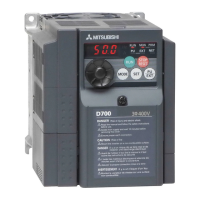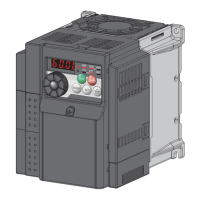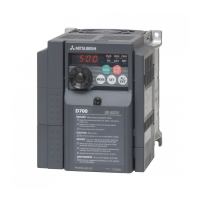How to fix Mitsubishi Electric FR-D720-008 motor rotating in the opposite direction?
- CChelsea Carlson DDSAug 18, 2025
To correct the motor's rotation direction, connect the phase sequence of the output cables (terminals U, V, W) to the motor correctly. Also, check the wiring of the start signals, ensuring forward rotation (STF) and reverse rotation (STR) are properly connected.







